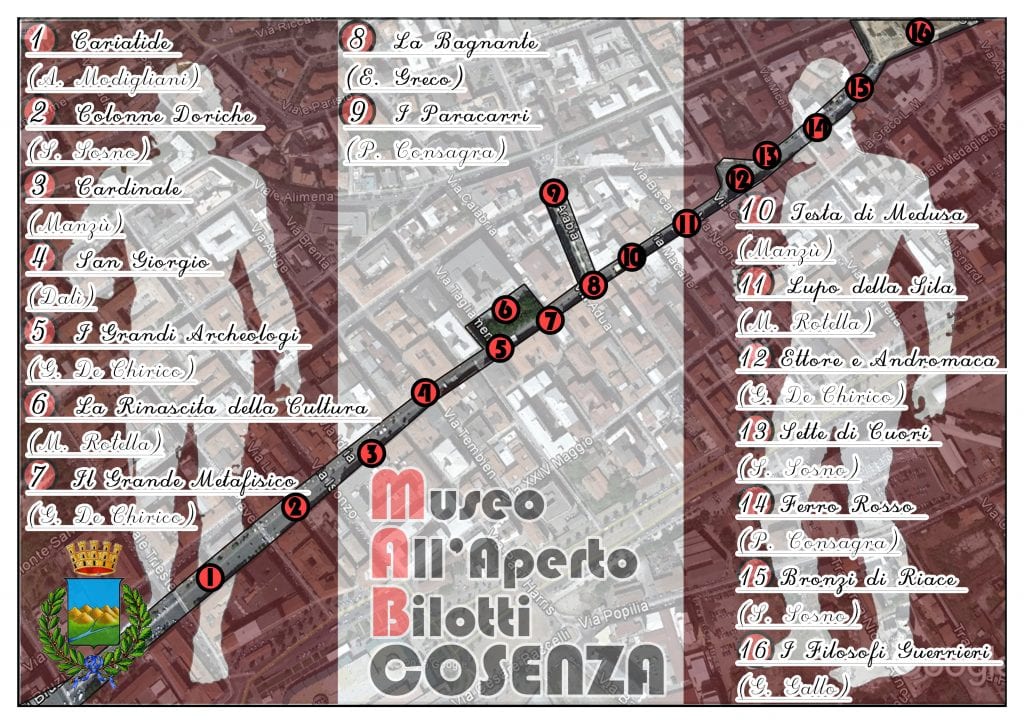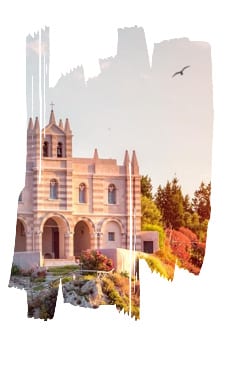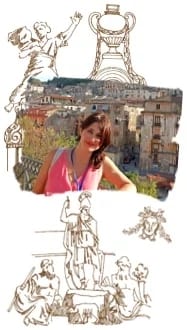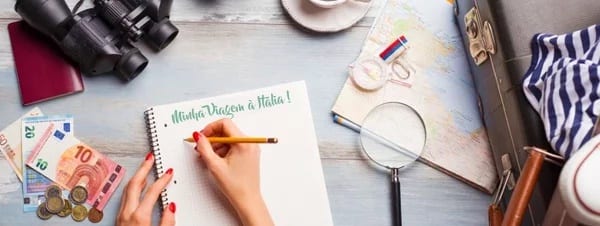Introduction
One of the most interesting museums in Italy is in Calabria and open-air, besides being very interesting! Today we will learn more about MAB, the Carlo Bilotti open air museum, in Cosenza, Calabria. Today we are going to Cosenza, Calabria, to visit the MAB (Museo all’Aperto Bilotti) Bilotti Open Air Museum. The Museum is a beautiful project dedicated to works of art donated by Carlo Bilotti to the municipality of Cosenza. Here at Your Travel to Calabria you make the trip of your dreams !!! Are you staying in Calabria? Looking for a hotel? Click here and discover best accommodation options in Calabria!
But who was Carlo Bilotti?
Bilotti was an international entrepreneur in the field of cosmetics and shortly after completing his legal studies in Naples and Palermo, he started working in the paper mills and other industries of his parents, Mario and Edvige Miceli, barons of Serradileo. What Are The Ten Places You Must See In Calabria?
In 1963 he moved to New York to study at Columbia University, and in 1968 he married Margaret Embury Schultz. Biotti was appointed vice president for Europe for the multinational Shulton, and moved to Paris; when he returned to NY in 1973, he was chosen to be president of Jacqueline Cochran, a famous perfume manufacturer that works with brands like Nina Ricci, Carven and Pierre Cardin. Soon after this period, he went to Switzerland, where he became the owner of the company La Prairie and, there, created a treatment line promoted by Christian Barnard. In addition to Paris and New York, he was a very active figure in the world of finance and art also in Zurich and London. Read also Enogastronomic Itinerary In Calabria.
A little more about Carlo
Carlo never let go his passion for art! He was friends with several artists such as Chirico, Warhol, Lichtenstein, Dalì, de Saint-Phalle, Rivers, Rotella and many others, and it was from these friendships that he received, on demand, incredible works of art: both, for his personal collection and for decorate his companies.
In 2019, the Ministry of Heritage and Cultural Activities and Tourism declared the Collection of the 20 works exhibited at the Bilotti Open Air Museum as a collection of “historical and artistic interest.” The MAB of Cosenza has a collection consisting of sculptures by representative artists from different eras of contemporary art that passed through the 20th century. He spent the last decades of his life with his wife and adopted children, Eric and Megan, between Palm Beach, New York and Rome. He passed away in New York, aged 72, on November 17, 2006.
In 2019, the Ministry of Heritage and Cultural Activities and Tourism declared the Collection of the 20 works exhibited at the Bilotti Open Air Museum in Cosenza as a collection of “historical and artistic interest”, with a specific decree.
Let’s visit the museum?
Created in 2006 and enriched over the years, the collection presents us with a true open-air art gallery. Located in the commercial heart of Cosenza, the works are spread over Corso Mazzini and its alleys. MAB’s route offers art in an innovative and very interesting way, where the works blend seamlessly with the urban and historic landscape.
Among the works, some deserve to be highlighted: the Bronzi di Riace, by Sacha Sosno; Hector and Andromache, by Giorgio De Chirico; The Renaissance of Culture, by Mimmo Rotella; La Grande Bagnante N.2 by Emilio Greco; San Giorgio and the Dragon, by Salvador Dalì, and The Permanent Cardinal, by Giacomo Manzù. There are 16 works in total and, below, we will know more about them.
1) Head of Caryatid (Testa di Cariatide – Amedeo Modigliani – 2006) – bronze sculpture.
It is part of the series of caryatids, which represent the synthesis of the culture and influences of European and African artistic movements in Paris; Modigliani was influenced by the Nigerian art of oceanic sculpture, the attraction to the esoteric world, the signs of Kabbalah, the symbols of the Jewish tradition and classical works. This sculpture is the only monumental bronze by Modigliani present in Italy.
2) Saint George and the Dragon (San Giorgio and il Drago – Salvator Dalì – 1977/84) – bronze sculpture.
At Corso Mazzini, with Via Adige, Dalì’s beautiful work portrays Saint George, or the critical-paranoid symbol, in the act of killing the dragon of reason. The sculpture also features a woman who ‘welcomes’ the event by raising her arm in victory. For Dalì, the flying dragon is a symbol of immortality, and the character that pierces it is a mysterious creature that defeats the animal with all its power. The bronze color differs in several points of the sculpture and, at the bottom part we have the feeling that there is no light present, which makes the figure that destroys the dragon, shine!
3) Great Bather (Grande Bagnante – Emilio Greco – 1957) – bronze sculpture
At Largo Lisa Bilotti, the work accompanies the Great Bather, from 1959, which was donated by Biotti in 2004, to the National Gallery of Cosenza – Palazzo Arnone. The ‘twist’ of the figure shown shows us the shape of a sinuous abstract line, with surfaces that seem to widen in progressive waves of vibrant vitality. It is a dynamic sculpture, and it conveys great animation, vigor and admiration. It is a symbol of female beauty, which automatically takes us back to the artistic repertoire of past centuries. The balance of forms is perfect!
4) Bi Frontal Curb (Paracarro Bifrontale – Pietro Consagra – 1991) – Toscana pink marble sculpture.
In Piazza Scura, you will find part of a series of unique works carried out in 1991, all made in marble. Commissioned by the Municipality of Lampedusa and Linosa, the works were purchased by Biotti in 2004 and donated to the Municipality of Cosenza. Like all sculptures by the artist Consagra, it expresses “the dramatic rhythm of modern life with plastic elements that formally synthesize the actions of man in contact with the gears of society with strength, will, optimism, simplicity and clarity”. The work is immense and very moving.
5) Curb (Paracarro – Pietro Consagra – 1991) – sculpture in Bardiglio marble, Tuscan travertine, walnut travertine marble, and Armi marble.
In Via Arabia you can find four works called ‘Curb’ and they are all part of a series of works done in 1991. Ordered by the Municipality of Lampedusa and Linosa, the works are beautiful and attract attention. It looks like giant chess pieces.
6) Red Iron (Ferro Rosso – Pietro Consagra – 1995) – sculpture in iron and polyurethane paint.
At Corso Mazzini with Via Miceli, you will find the only example of sculpture made by Consagra linked to the concept of frontality, that is, 2D. Ferro Rosso is two-dimensional, and the possibility of reading the work is duplicated, presenting us with two perspectives. The plastic elements complement each other and fit in an asymmetric but harmonious way, expressing the dramatic rhythm of current life. The work is a kind of formal synthesis of man’s actions in relation to society, and everything is presented in a majestic way with a striking, strong and beautiful color: red.
7) Standing cardinals (Cardinali in Piede – Giacomo Manzù – 2004) – bronze sculpture.
Between Corso Mazzini and Via Isonzo, you will find a hieratic image, with a beautiful pyramidal structure, which represents meditation. Solemn and majestic, the image invades space and presents itself in a simple but powerful way. Here, the consistent volumetric apparatus created by the conical mass of the body is evident, and in profile the work ’empties’ and presents itself in an ethereal way, with a silhouette that reminds us of a rare formal and spiritual rehearsal.
8) Head of Medusa (Testa di Medusa – Giacomo Manzù – 1999) – Bronze sculpture.
At Corso Mazzini, at the intersection with Via Macallè, you can see this real gem! It is a piece whose bronze casting was made with the original 1946 marble. It is, in fact, fascinating, very expressive and of an unparalleled beauty. Expressing sobriety, severity and compactness at the same time, the ‘hair’ interprets the concept of movement and is impressive.
9) Bronzes of Riace (Bronzi di Riace – Sasha Sosno – 2005) – sculpture in metal alloy.
In Corso Mazzini with Via A. Giuliani, the work is located with the drawing of the two silhouettes of the stylized Bronzes de Riace, cut out of two steel plates painted red. The play of the work with its ‘empty spaces’, presents and offers us a unique beauty. This void left in the silhouettes is filled by everyday life, the movement of the city and the urban context. The artist uses the forms of the statues in a majestic way and modernizes them with precision and mastery. It is the past in an intimate dialogue with the present!
10) Three Columns (Ter Colonne – Sasha Sosno – 2008) – white marble sculpture.
Also on Corso Mazzini, at the intersection with Via Idria, there are three Doric columns, one next to the other, which complement each other and give meaning to the work as a whole. The work reminds us of one of the most universally recognized symbols of Hellenic architecture and religiosity, the Temple, but it also synthesizes what – perhaps, is the most complete and abstract concept of beauty: simplicity.
11) Seven of hearts (Sette di Cuore – Sasha Sosno – 2010) – sculpture in white Carrara marble.
The poker card presented by the seven of hearts is a work carved in white Carrara marble and supported on a gray granite base from the quarries of Silane, worked by Lucio Ghio. Ordered by Carlo and Vincenzo Bilotti, the Seven of Cups refers to the seven hills of the city of Cosenza, while the heart sign attests the love between the Bilotti brothers for their hometown.
12) Renaissance of Culture (Rinascita della Cultura – Mimmo Rotella – 2002) – bronze alloy sculpture.
In Piazza XI Settembre you can see a beautiful work ordered from the artist by the Municipality of Cosenza. The sculpture praises the poetry of culture as a reaction to the fundamentalisms and totalitarianisms expressed since the attack on the WTC in New York, which took place on September 11, 2001. It depicts a pile of books ‘crowned’ by open pages at its top, which suggests a flight of birds: humanity’s weapon is culture and books, which serve as a global redemption for a social renaissance. The representation of the expansion of knowledge emerges clearly, and is proposed in a pyramidal way, showing that the base is more important than, in fact, the top – which also does not lose its value, but which, without a base, would not be sustained.
13) Wolf of Sila (Lupo della Sila – Mimmo Rotella – 2005) – sculpture in green granite.
In Piazza Kennedy you will find a beautiful work! The work of Wolf of Sila, which was carried out with sheets of green granite from Carrara, was the last work done by Mimmo Rotella, who died before seeing the sculpture completed. The work was subsequently completed by the Mimmo Rotella Foundation. The sculpture presents us with the moment when the animal raises its head to the sky and howls, highlighting the dynamic strength of the contracted nerves, muscles and released energy. The metaphorical message is from and for the Calabria people: “unite and seek emancipation and redemption”.
14) Hector and Andromaca (Ettore and Andromaca – Giorgio De Chirico – 2005) – bronze sculpture with dark patina.
Also in Piazza Kennedy we find two copies authorized by the Giorgio Foundation and Isa De Chirico for the cities of Cosenza and Roma, created by Tavani srl. Mythical characters – from the metaphysical period of the Maestro – appear before the “Porte Scee”, and present them before the Hector’s duel with Achilles. It represents a moment of uncertainty and obscurity of consciousness that justifies life and death in the face of eternity. Andromache carries her misfortunes with dignity and represents the feminine ideal, with grace and delicacy.
15) Great Archeologists (Grandi Archeologi – Giorgio De Chirico – 2008) – bronze sculpture with dark patina.
Another sculpture located in Piazza XI Settembre; this is inspired by a 1968 copy by Giorgio De Chirico. There are two figures of the typical De Chirico mannequins who are seated side by side, and one wraps the other to place a hand on his shoulder. Both present the traditional draped dress and hold traces of ancient civilizations on their laps, a reference to the archaeologist’s past and profession.
16) Great Metaphysical (Great Metaphysical – Giorgio De Chirico – 2009) – bronze sculpture with dark patina.
We concluded our tour without leaving Piazza XI Settembre with a single copy authorized by the Giorgio and Isa De Chirico Foundation, destined for the city of Cosenza and created by Fundição Bonvicini de Sommacampana (VR). The sculpture is an extension of the original work, from 1970, and inspired by the paintings of New York and Berlin. The Great Metaphysicist evokes the strength of the imaginary De Chirico, which, alongside the images of metaphysics, meets a mythological world that reminds us of the artist’s Greek origins. An incredible structure that brings together symbols and objects from countless previous compositions in perfect harmony.
Useful information
Below is the map of the itinerary or all the pieces mentioned above – Source and a special thanks to click here. See the map with the attractions in MAB.

Remembering that
It is worth remembering that there are indications, along the way and right at the entrance of the museum, about where the works are located.
Special thanks to Cosenza Cultura for all the information on all the works contained in this post!
Watch this video: Discovering Calabria with Ana Patricia: the MAB in Cosenza
Subscribe to our channel and receive more videos with information and tips about Italy. Don’t forget to leave that Like;)
Conclusion
Let’s visit the MAB: Open Air Museum Carlo Bilotti, in Cosenza – If you are in Cosenza be sure to visit this beautiful outdoor museum! It is a super interesting place, the entrance – of course – is free and you can visit it every day of the week, 24 hours!
TRAVELING TO CALABRIA IS A WONDERFUL EXPERIENCE, BUT BEING A REGION WITH A SMALL TOURISM INFRASTRUCTURE FOR FOREIGNERS, IT IS NOT SO SIMPLE TO VISIT THIS AMAZING PLACE WITHOUT ANY HELP, ESPECIALLY IF YOU DON’T SPEAK ITALIAN.
HIRING OUR SERVICES YOU WILL BE ABLE TO ADMIRE EVERYTHING THAT THIS BEAUTIFUL AND SPETACULAR REGION HAS TO OFFER!
ENJOY EVERY SINGLE MOMENT BY HIRING THE SERVICES OF A PROFESSIONAL THAT CAN GIVE YOU THE GUARANTEE OF THE BEST SERVICE.
WHY EXPERIENCE STRESSFUL TIMES ON YOUR SO DREAM VACATION IF YOU CAN HAVE EXCELLENCE IN SERVICE FOR THE BEST COST – BENEFIT?
TO LEARN MORE ABOUT OUR RATES, ‘MY GUIDE’ SERVICES, TOURIST ESCORTING, INTERPRETER OR ASSISTANCE TO FIND THE DOCUMENTS OF YOUR RELATIVES CALABRESES, EMAIL ME!
SEARCH, COMPARE AND CHOOSE! YOU WILL NOT REGRET!
I AM A GUIDE WITH EXPERTISE IN PORTUGUESE AND ENGLISH LANGUAGE IN CALÁBRIA, AND I AM SURE YOU WILL LOVE TO SEE THIS AMAZING ITALIAN REGION WITH ME! IT WILL BE AN UNFORGETTABLE JOURNEY!
I’M WAITING FOR YOU! 🙂
* FOR TOURISTIC SERVICES IN OTHER LANGUAGES, PLEASE SEND AN EMAIL.
An Extra Help for your Trip
The best content from Viajando para a Itália!
Learn more about our tours in Calabria right now!
- Itinerary for 3 days in Calabria?
- Itinerary for 6 days in Calabria?
- Learning To Cook In Calabria? Itinerary in 7 days: the best!
- What are the 10 places you need to go in Calabria?
- Why should you visit Tropea in Calabria?
- All about Reggio.
- All about Cosenza.
- What is the best time of the year to go to Calabria?
- How to get from Lamezia Terme airport to downtown of Lamezia, Cosenza and Reggio Calabria?
- Where to stay in Calabria?
Check all our posts about Calábria!
Best regards from Calábria


 AIRPORTS IN CALÁBRIA
AIRPORTS IN CALÁBRIA 30 MINUTES OF TRAVEL ADVICE FOR FREE!
30 MINUTES OF TRAVEL ADVICE FOR FREE!
 By hiring my services, you save money and time, and still travel with great peace of mind!
By hiring my services, you save money and time, and still travel with great peace of mind!